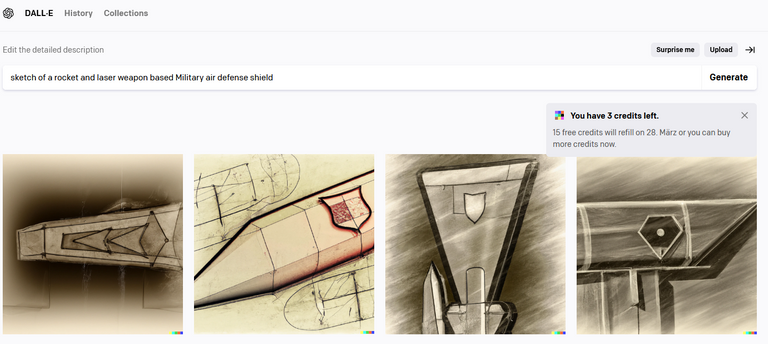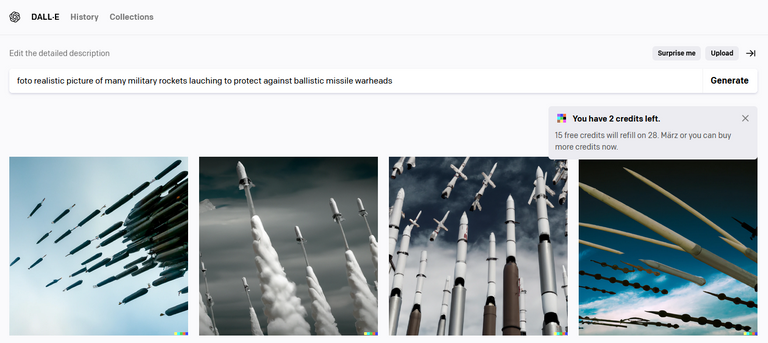
Is there an effective military defense Air shield in Europe or more narrow in Germany?
Section 1: Introduction
Europe has always been a political hotbed, with countries constantly jostling for power and influence. This has led to a situation where countries in Europe need to be prepared for any eventuality, including the possibility of a military attack on their territory. One of the most important aspects of military defense in Europe is the air shield, which is a system designed to protect against missile attacks. In this blog post, we will examine whether there is an effective military defense air shield in Europe, and more specifically, in Germany. We will also explore whether such defenses are sufficient to protect against Russian rocket attacks.
Section 2: History of Military Defense Air Shield
The history of military defense air shield goes back to the Cold War, when the United States and the Soviet Union were engaged in a nuclear arms race. During this time, the United States developed a missile defense system known as the Strategic Defense Initiative (SDI), also known as "Star Wars." The system was designed to shoot down incoming missiles before they could reach their targets. However, the system was never fully deployed and was eventually abandoned.
In recent years, there has been renewed interest in missile defense systems, particularly in Europe. In 2010, NATO adopted a missile defense plan that included the deployment of missile defense systems in Europe. The system is designed to protect against missile attacks from outside Europe, particularly from Iran. However, the system does not provide protection against Russian missiles.
Section 3: Current State of Military Defense Air Shield in Europe
Currently, there are two main missile defense systems in Europe. The first is the Aegis Ashore system, which is operated by the United States and is located in Romania and Poland. The system is designed to protect against short and medium-range ballistic missiles. The second system is the THAAD system, which is operated by the United States and is located in South Korea. The system is designed to protect against short and medium-range ballistic missiles.
In addition to these systems, there are also a number of national missile defense systems in Europe. For example, Germany has the Patriot missile defense system, which is designed to protect against short and medium-range ballistic missiles. France has the Aster missile defense system, which is designed to protect against short and medium-range ballistic missiles.
Section 4: Effectiveness of Military Defense Air Shield in Europe
The effectiveness of missile defense systems in Europe is a matter of debate. Supporters of the systems argue that they provide an important layer of protection against missile attacks. Critics argue that the systems are expensive and not very effective.
One of the main criticisms of missile defense systems is that they are not capable of intercepting all incoming missiles. For example, the Aegis Ashore system is designed to intercept short and medium-range ballistic missiles, but is not capable of intercepting intercontinental ballistic missiles (ICBMs). This means that the system would be ineffective against Russian missiles, which are ICBMs.
Section 5: Military Defense Air Shield in Germany
Germany has a number of missile defense systems in place, including the Patriot missile defense system and the MEADS (Medium Extended Air Defense System) missile defense system. The Patriot system is designed to protect against short and medium-range ballistic missiles, while the MEADS system is designed to protect against short and medium-range ballistic missiles, as well as low-flying cruise missiles.
However, like other missile defense systems in Europe, the systems in Germany are not capable of intercepting ICBMs. This means that they would be ineffective against Russian missiles.
Section 6: Russian Rocket Attacks
One of the main concerns of countries in Europe is the possibility of a Russian missile attack. Russia has a large arsenal of ICBMs and has made no secret of its desire to maintain its military superiority. In recent years, Russia has increased its military activity in Europe, including the annexation of Crimea in 2014.
While it is difficult to predict whether Russia would launch a missile attack on Europe, the possibility cannot be ruled out. In the event of such an attack, missile defense systems in Europe would be of limited effectiveness, as they are not capable of intercepting ICBMs.
Section 7: Future of Military Defense Air Shield in Europe
The future of missile defense systems in Europe is uncertain. Some countries, such as the United States, are committed to maintaining and expanding their missile defense capabilities in Europe. Other countries, such as Germany, are more skeptical of the effectiveness of missile defense systems and are reluctant to invest in them.
There are also concerns about the cost of missile defense systems. The Aegis Ashore system, for example, is estimated to cost around $800 million. This has led some European countries to question whether the cost is worth the benefit.
Section 8: Conclusion
In conclusion, while there are missile defense systems in place in Europe, they are not capable of intercepting ICBMs, which are the main concern in the event of a Russian missile attack. This means that missile defense systems in Europe are of limited effectiveness in protecting against such an attack. The future of missile defense systems in Europe is uncertain, with some countries committed to maintaining and expanding their capabilities, while others are more skeptical of their effectiveness and cost.
Section 9: Recommendations
Given the limitations of missile defense systems in Europe, it is important for countries to focus on other aspects of military defense, such as deterrence and diplomacy. This includes maintaining a strong military presence in Europe, increasing cooperation between countries, and engaging in dialogue with Russia to reduce tensions and increase transparency.
Section 10: Implications for European Readers
The issue of military defense air shield in Europe has important implications for Peakd Hive readers. As citizens of European countries, readers have a stake in the security and stability of their countries. It is important for readers to be informed about the current state of missile defense systems in Europe and to engage in discussions about the future of these systems. In addition, readers can play a role in supporting efforts to increase cooperation and dialogue between countries in Europe, and between Europe and Russia.
So? What do you think about this?
I guess, military security has become more important to many people in our post 2014 crimea annexion and the ongoing Russian war on Ukraine in 2022, world.
Besides the "big guns", ballistic missiles with multiple nuclear warheads, smaller weapons systems would typically be used to gain air superiority before first enemy soldiers set foot on foreign ground.
The less effective a defense against such strikes the more likely a fast air superiority could be achieved, which is key for any military ground action.
In the post cold war era, European countries and especially Germany have shrunk military spendings to a level that their military isn't effective anymore.
The German Government has accepted this status quo and has committed to correct this open flanc with massive investments. There will be up to 100 billion Euros put into the German military to modernize and restock missing defense capapbilities.
At the forefront of these efforts are air defense shield investments, knowing that such a shield is essential for the survivability of a overall air defense with consequences on all defenses in the country or even the European realm as a whole.
Full disclosure: Parts of this post were generated with Jounce.ai (Jounce is an easy-to-use, AI-powered copywriting solution).
Btw... not all AI results are easily human understandable... I guess!?! 🤷♂
I like to use AI generated images for my blog posts. This here is an example of an - imho - unusable output!😄

This here is more of what I wanted...

Copying/Pasting content (full or partial texts, video links, art, etc.) with adding very little original content is frowned upon by the community. Publishing such content could be considered exploitation of the "Hive Reward Pool" and may result in the account being Blacklisted.
Please refrain from copying and pasting, or decline the rewards on those posts going forward.
If you believe this comment is in error, please contact us in #appeals in Discord.